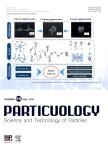An evaluation of the emission profile for two-wheelers at a traffic junction
An evaluation of the emission profile for two-wheelers at a traffic junction作者机构:Engine Research LaboratoryDepartment of Mechanical EngineeringIndian Institute of Technology Kanpur Department of Civil EngineeringIndian Institute of Technology Kanpur
出 版 物:《Particuology》 (颗粒学报(英文版))
年 卷 期:2015年第13卷第1期
页 面:112-119页
核心收录:
学科分类:083002[工学-环境工程] 0830[工学-环境科学与工程(可授工学、理学、农学学位)] 07[理学] 0817[工学-化学工程与技术] 08[工学] 0805[工学-材料科学与工程(可授工学、理学学位)] 0703[理学-化学] 0702[理学-物理学] 0713[理学-生态学]
主 题:Benzene soluble organic fraction (BSOF) Particle number and size distribution Trace elements Polyaromatic hydrocarbons (PAHs) Regulated gaseous emissions
摘 要:Two-wheeler vehicles are an important mode of transportation in developing countries. However, the emissions from two-wheeler vehicles are significant. Urban two-wheeler vehicles with gasoline-fueled engines produce NOx and particulate matter emissions that affect urban air quality. During traffic light stops and programmed stops, for instance, pollutants are emitted and are dangerous to human health. In this experimental study, two-wheeler vehicles with different makes, technologies and engine capacities were tested for exhaust emissions including gravimetric and online measurements at different engine speeds and a no load condition at a simulated traffic junction. Gravimetric measurements were performed by collecting the particulate mass (at two engine speeds: 1500 and 2500 rpm) from a diluted engine-out exhaust on quartz filter paper. Next, these collected particulates were used to determine the presence of metals, as well as the benzene soluble organic fraction (BSOF). The total particulate mass, BSOF and trace elements were slightly higher at a higher engine speed (2500 rpm). Online measurements were performed by sampling the engine exhaust (at four engine speeds: 1500, 2000, 2500, and 3000rpm) and using online instruments to determine the particle number and size distribution, the particle-bound polyaromatic hydrocarbons (PAHs), the gaseous emissions and the smoke opacity. Engines with higher cubic capacity emitted a higher concentration of nano-particles. The particle-bound PAH concentration increased as the engine speed increased, but this concentration was notably low for the highest engine speed tested (3000 rpm). The regulated gaseous emissions increased as the engine speed increased for all vehicles.



